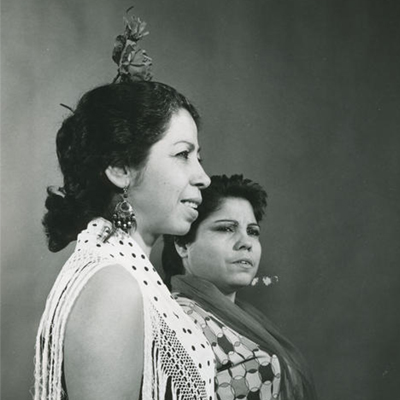flamenco
Fernanda and Bernarda, who performed at Tablao Flamenco Cordobes Barcelona
Fernanda and Bernarda de Utrera were both gypsy, single and compromised with cante bravo (brave singing). They were the first artistic generation of Los Pinini, who were butchers.

Fernanda and Bernarda de Utrera were both gypsy, single and compromised with cante bravo (brave singing). They were the first artistic generation of Los Pinini, who were butchers. They both had lineage, art, style and two peculiar voices that made them rise to fame in the flamenco Barcelona world. Fernanda and Bernarda were daughters of José el de Aurora and Chacha la Inés, and granddaughters of the flamenco Barcelona singer Fernano Peña Soto “Pinini” who, despite not being a professional singer, he was famous in Utrera.
Fernanda Jiménez Peña was born in 1923 and her sister in 1927. According to a text extracted from their album “Quejío”, “Their cante originates from their wounded voice which is gifted for the quejío and for the flamenco duende”.
The father of both sisters didn’t want that their daughters were flamenco Barcelona artists because he didn’t want the people to think that he was a kept man. The most important flamenco Barcelona artists of those times like Mairena, Caracol, Lola Flores or Valderrama recognized their value and all the people from the surroundings wanted to know the girls with the best voice of Utrera. With time, Fernanda and Bernarda were both recognized even in New York, in 1964 within the framework of the world fair. This fact gave them the opportunity to participate in the album entitled “Manuela Vargas”, two years after.
They are, both, a clear example of the best Spanish art.
As Bernarda said “both sisters are singers from birth” due to since they were kids they were raised in an artistic flamenco Barcelona environment that influenced them. Many artists came also to Pinini’s home to listen to them.
Fernanda and Bernarda started their professional career in 1957 by the hand of Antonio Mairena, who brought them to Madrid to perform at tablaos Zambra, El Corral de la Morería, Torres Bermejas and Las Brujas. For 50 years Fernanda and Bernarda shared poster and it wasn’t until Bernarda had to stop performing due to her illness that Fernanda started to act in solitary.
Even though they developed the most part of their career toguether, is worth it to pinpoint the characteristics of each sisters who, even if both flamenco artists, they were also different and unique.
The best ever singer of soleares, easy to say. That’s how Fernanda is considered. Even though is something really difficult to demonstrate due that we don’t have any audio records of previous flamenco Barcelona artists, most of the scholars agree that she is the best singer of the entire XX century of this flamenco palo. Only the singer Mecedes Fernández Vargas “La Serneta” could compete with her but we don’t have any audio record of her.
Apart of soleá, Fernanda is also recognized for mastering other flamenco palos like bulería, la cantina or el fandango. In August 24th 2006, Fernanda died in Utrera due to a heart attack.
Regarding Bernarda, her speciality was the festivity singing, especially buleria, where she excelled over the rest of singers. Besides, it was told of her that she had and encyclopaedic knowled of flamenco Barcelona and that she mastered an exceptional number of palos like fandango, seguirira, tarantos, soleares, bulerías, cantiñas, tientos o tangos.
During her career she has been accompanied by the crème de la crème of flamenco Barcelona guitarists of the second half on XX century, like Melchor de Marchena, Paco Aguilera, Juan Habichuela, Enrique de Melchor, Juan Santiago Maya “Marote”, Pago del Gestor, among others. She released her first solo album in “Ahora” in 2000, after more than 50 years sharing her career with her sister. She passed away in October 28th 2009, also in her home in Utrera.
The town where they both were born, Utrera, inaugurated a monument in 2005 to pay tribute to the sisters.
Fernanda Jiménez Peña was born in 1923 and her sister in 1927. According to a text extracted from their album “Quejío”, “Their cante originates from their wounded voice which is gifted for the quejío and for the flamenco duende”.
The father of both sisters didn’t want that their daughters were flamenco Barcelona artists because he didn’t want the people to think that he was a kept man. The most important flamenco Barcelona artists of those times like Mairena, Caracol, Lola Flores or Valderrama recognized their value and all the people from the surroundings wanted to know the girls with the best voice of Utrera. With time, Fernanda and Bernarda were both recognized even in New York, in 1964 within the framework of the world fair. This fact gave them the opportunity to participate in the album entitled “Manuela Vargas”, two years after.
They are, both, a clear example of the best Spanish art.
As Bernarda said “both sisters are singers from birth” due to since they were kids they were raised in an artistic flamenco Barcelona environment that influenced them. Many artists came also to Pinini’s home to listen to them.
Fernanda and Bernarda started their professional career in 1957 by the hand of Antonio Mairena, who brought them to Madrid to perform at tablaos Zambra, El Corral de la Morería, Torres Bermejas and Las Brujas. For 50 years Fernanda and Bernarda shared poster and it wasn’t until Bernarda had to stop performing due to her illness that Fernanda started to act in solitary.
Even though they developed the most part of their career toguether, is worth it to pinpoint the characteristics of each sisters who, even if both flamenco artists, they were also different and unique.
The best ever singer of soleares, easy to say. That’s how Fernanda is considered. Even though is something really difficult to demonstrate due that we don’t have any audio records of previous flamenco Barcelona artists, most of the scholars agree that she is the best singer of the entire XX century of this flamenco palo. Only the singer Mecedes Fernández Vargas “La Serneta” could compete with her but we don’t have any audio record of her.
Apart of soleá, Fernanda is also recognized for mastering other flamenco palos like bulería, la cantina or el fandango. In August 24th 2006, Fernanda died in Utrera due to a heart attack.
Regarding Bernarda, her speciality was the festivity singing, especially buleria, where she excelled over the rest of singers. Besides, it was told of her that she had and encyclopaedic knowled of flamenco Barcelona and that she mastered an exceptional number of palos like fandango, seguirira, tarantos, soleares, bulerías, cantiñas, tientos o tangos.
During her career she has been accompanied by the crème de la crème of flamenco Barcelona guitarists of the second half on XX century, like Melchor de Marchena, Paco Aguilera, Juan Habichuela, Enrique de Melchor, Juan Santiago Maya “Marote”, Pago del Gestor, among others. She released her first solo album in “Ahora” in 2000, after more than 50 years sharing her career with her sister. She passed away in October 28th 2009, also in her home in Utrera.
The town where they both were born, Utrera, inaugurated a monument in 2005 to pay tribute to the sisters.
